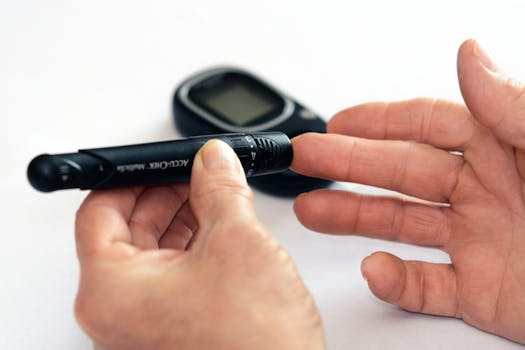Many individuals dealing with diabetes or prediabetes often wonder: can pain raise blood sugar levels? This question is rooted in the intricate ways our bodies respond to both physical and emotional stressors. When someone experiences pain, their body undergoes physiological changes that can impact blood sugar levels.
Can Pain Raise Blood Sugar?
There is scientific evidence suggesting that pain can indeed raise blood sugar levels. When the body encounters pain, it triggers a stress response. This leads to the release of stress hormones such as cortisol and adrenaline. These hormones can cause the liver to release more glucose into the bloodstream, potentially raising blood sugar levels. Whether you experience acute pain from an injury or chronic pain from a condition like arthritis, these physiological responses can be significant.
The notion that pain can elevate blood sugar is important for individuals managing diabetes. Elevated blood sugar levels may require adjustments in medication or diet, underscoring the need for comprehensive pain management strategies. For more information on managing diabetes effectively, consider exploring diabetes management techniques on our website.
Understanding the Body’s Response to Pain
When asked “does pain increase blood sugar?”, understanding the body’s underlying mechanisms can be helpful. The endocrine system plays a crucial role in this process. When experiencing pain, the hypothalamus in the brain signals the adrenal glands to release stress hormones. This hormonal surge prepares the body to deal with the perceived threat, often termed the “fight or flight” response.
In the context of this biological reaction, one can see how pain doesn’t merely lead to discomfort—it also initiates systemic changes across multiple bodily functions, including glucose metabolism. This increased glucose production can temporarily spike blood sugar levels, posing additional challenges for those already managing diabetes or similar conditions.
Types of Pain That May Affect Blood Sugar
Does pain raise blood sugar levels uniformly across all types of pain? Not always. The correlation between pain and increased blood sugar can vary based on several factors, including the cause and duration of the pain. Here are some types:
- Acute Pain: Sudden pain from injuries or surgeries may cause brief spikes in blood sugar levels.
- Chronic Pain: Conditions such as fibromyalgia or neuropathy may contribute to more sustained elevations.
- Emotional Pain: Stress and emotional pain can also activate the body’s stress response, affecting blood sugar similarly to physical pain.
Pain Management and Blood Sugar Control
The interrelationship of pain and blood sugar control highlights the importance of effective pain management. If you are dealing with chronic pain, there are several strategies you can adopt to mitigate its impact on your blood sugar levels:
- Medication: Certain pain relief medications can work effectively without affecting your blood sugar. However, always consult your healthcare provider to discuss the best options.
- Therapies: Physical therapy or acupuncture can be beneficial in reducing chronic pain and associated stress.
- Mindfulness and Relaxation Techniques: Practicing meditation, yoga, or deep breathing exercises can help manage stress-induced pain, thus aiding in maintaining balanced blood sugar levels.
The Role of Lifestyle in Pain and Blood Sugar Management
Adopting a healthy lifestyle is essential for managing both pain and blood sugar. Regular exercise, a balanced diet rich in whole foods, and maintaining a healthy weight can significantly impact your overall metabolic health. Certain foods with anti-inflammatory properties, such as Omega-3 rich fish, flaxseeds, and leafy greens, are being studied for their potential to support both pain and blood sugar management.
It is also important to monitor your blood sugar level regularly, especially if you are experiencing pain frequently. Keeping a record can help you detect patterns and work with your healthcare provider to make necessary adjustments to your diabetes management plan.
In conclusion, the question “can pain raise blood sugar?” is more than a curiosity—it’s a critical consideration for those managing diabetes and related conditions. With appropriate pain management strategies, lifestyle changes, and consistent communication with healthcare providers, one can better navigate the complexities of this relationship.
Takeaways
- Pain can elevate blood sugar by triggering stress hormones.
- Different types of pain may impact blood sugar differently.
- Effective pain management can help stabilize blood sugar levels.
- Lifestyle factors, including diet and exercise, play a vital role.
- Regular monitoring aids in personalized management strategies.
FAQ
Can stress from pain affect my diabetes management?
Yes, stress from pain can increase blood sugar levels, complicating diabetes management. It’s important to manage stress effectively through lifestyle changes and therapy.
How quickly can pain affect my blood sugar levels?
Pain can cause an immediate spike in blood sugar due to the rapid release of stress hormones. The impact can vary depending on the intensity and duration of the pain.
Are there any specific foods that can help manage pain and blood sugar?
While no food cures pain or diabetes, those rich in Omega-3 fatty acids and antioxidants may support your body’s natural pain and blood sugar management processes.
Is there a connection between emotional stress and pain affecting blood sugar?
Yes, emotional stress can trigger the same stress hormones as physical pain, potentially raising blood sugar levels.
What should I do if my pain management strategy isn’t controlling my blood sugar effectively?
If pain management is not effectively controlling blood sugar, it’s essential to consult a healthcare provider. They can offer personalized advice and adjust your treatment plan as needed.
For additional trusted health information, you can visit this external resource.






